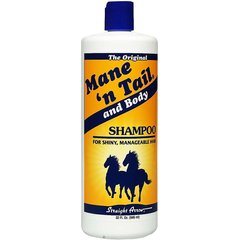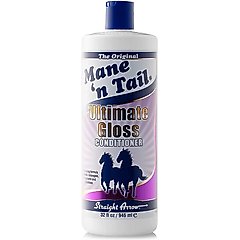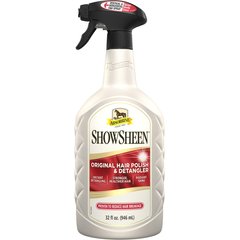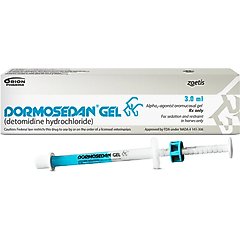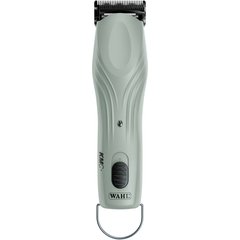How To Clip a Horse: Patterns, Tools, and Pro Tips

Photo by daniele russo/iStock/Getty Images Plus
Horse clipping, or removing part or all of its coat, is a valuable grooming skill. It doesn’t just help keep horses from overheating or excessively sweating during exercise—it can also play an important role in addressing skin health issues and preparing for a show.
Learning how to clip a horse takes some practice, but it’s a valuable skill that can help you prepare for shows, stay on top of your horse’s health, and keep them comfortable during winter rides.
Key Takeaways
- Clipping a horse can help prevent overheating and may help treat or prevent various skin issues.
- There are many types of equine clips, allowing you to choose the best option for your horse’s needs and activity level.
- Certain steps, like making sure you choose the right clippers and taking the time to thoroughly clean your horse, can help you get the best equine body clipping results.
Reasons To Clip a Horse
Clipping horses has many benefits, including:
- Removing excess hair. This helps prevent horses with thick winter coats from overheating during work
- Reducing sweat and drying time, because clipped horses stay naturally cooler
- Preventing dehydration and electrolyte loss from excessive sweating
- Making it easier to monitor body weight
But clipping isn’t just for the winter months, when it takes longer for horses to dry if they become sweaty.
For horses with Cushing’s disease or other medical conditions “that impact hair growth or slow shedding, [clipping] is an essential tool to provide comfort and help with temperature regulation,” says Hannah Spector, a professional equine groom and co-owner of Braids & Body Clips PNW in Oregon.
Spector notes that many skin problems and diseases can be prevented, improved, or even resolved through clipping—especially in horses with leg feathers, or long hair growing up the legs.
Additionally, if you plan on showing your horse, clipping is key to creating a neat and tidy presentation. Even if you don’t show, clipping can make your horse’s daily grooming easier, especially if your horse likes to roll.
Horse Clipping Patterns
There are many different types of horse clip patterns to choose from, and each serves a slightly different purpose:
Full Clip
Commonly used on competition horses, the full clip removes all hair, including from the horse’s face and legs. The full clip lets horses train and compete during the winter without overheating.
Hunter Clip
A hunter clip removes hair from the head, neck, and body but leaves behind a patch of hair where the saddle sits to help prevent rubs.
The horse’s legs are also left unclipped, providing extra protection to hunters as they jump through brush or fields.
Blanket Clip
With a blanket clip, the hair is left in a blanket-shaped pattern on the horse’s back, running from the withers to the tail. Hair is clipped from the neck, chest, and belly, helping to keep your horse cooler during work while still offering them some warmth.
Trace Clip
Trace clips remove hair from the neck, belly, chest, and flank undersides while leaving hair on the top half of the horse.
This type of clip likely originated with carriage horses, and its outline follows where the harness traces would lie.
Irish Clip
An Irish clip is more minimal and is designed to remove hair in the areas that experience the heaviest sweating. Hair from the neck, chest, and belly is removed, while hair is left on the upper portion of the horse and the legs.
Clipping Tools and Preparation
A successful clipping job starts with the right tools, including:
- Clippers suited to the job—compact models like the Wahl Super Pocket Pro Battery Powered Trimmer for detail work, and larger clippers for full body clips
Recommended Product
- Sharp or replacement clipper blades
Recommended Product
- Clipper blade lube oil to keep clippers running smoothly
Recommended Product
- Cooling lubricant oil to keep blades cool during larger jobs
Recommended Product
- Chalk or masking tape to mark clip paths
- Horse shampoo and conditioner to bathe before clipping
Recommended Products
- Grooming brush to remove dirt, debris, and clipped hair
Recommended Product
- Extension cords for corded clippers
It’s essential to prepare your horse properly before you clip them, and a thorough bath can help remove dirt, leaving the coat easier to clip.
Monica Davis, an FEI groom whose horses have won multiple national and FEI awards for their turnout, recommends starting with a clean, dry horse. She sprays ShowSheen on the horse while they’re still damp post-bath.
Recommended Product
“This lets the ShowSheen get all the way to the skin, which will help my clippers stay cool longer, stay sharper, and stop the clipped hair from sticking to me too much,” she says.
You’ll also need a quiet, well-lit space that’s free from distractions. And if you’re using corded clippers, make sure there’s a power source nearby.
How To Clip a Horse Step by Step
1. Safety First
“Clipping can be an overwhelming sensory experience,” cautions Spector. “Be aware that even the most docile of equines may kick, strike, bite, or react explosively out of fear—and being prepared for this type of behavior can help keep you safe.”
Spector keeps her free hand lightly on the horse’s body while she clips; it helps her feel their tension or relaxation, so she can plan accordingly.
She advises against cross-tying or hard-tying a horse when introducing clippers until you know how they react. And unless you have personally clipped a horse before, don’t assume they’ll tolerate it well.
Enlist a helper to hold the horse and consider asking your vet about prescribing Dormosedan gel, just in case.
Recommended Product
2. Check Your Equipment
Before you begin clipping, make sure all your equipment is prepped and in good working order.
- Use sharp blades—dull ones can make clipping harder and result in an uneven clip.
- Lubricate your clipper blades and have a cooling lubricant on hand, especially for larger jobs.
Carefully choose your blade length based on the season and your goals.
“A 1.5mm blade is great for maximizing time between clips in the winter, but I might reach for a 2.5mm if I want to leave some sun or bug protection in summer months,” Davis says.
If you plan to leave certain areas unclipped—like under the saddle—this is a good time to mark your clip lines using chalk or masking tape.
3. Start With a Comfortable Area
Begin clipping in a spot where your horse is likely to feel at ease. Spector usually starts on the shoulder.
“It’s a generally well-tolerated, fairly flat area with one direction of hair growth and is a good point of entry for most clipping styles,” she says.
As you work, use light, even pressure and aim for long, overlapping passes. “I will then go over the same area offset at a 45-degree angle to catch any remaining hairs,” Spector says.
4. Move on To Detail Areas
“The head and legs are definitely the hardest and least tolerated body parts to clip,” says Spector. Some horses are fine with one area but not the other, some tolerate both, and some tolerate neither.
Choose clippers that are powerful enough to get through dense areas, like the knees and fetlocks, but small enough to reach tight spots. Spector recommends the Wahl KMC+ or the Wahl KM10+.
Recommended Products
Be cautious around sensitive areas like the flank, armpits, and edges of ears. “Use your free hand to help keep skin taut to avoid nicks,” Spector says. “Lifting a foreleg stretches the wrinkles in the skin to get into the armpit, too.”
Before clipping the face, plan which hair to leave. If you show, double-check the rules with your governing organization or discipline so that you’re following the breed standard, especially when it comes to removing sensory hairs, like whiskers.
Davis emphasizes patience during these trickier spots. “Every time you clip a horse, you’re teaching them about clipping,” she says. “It’s better to leave them a little messier if it means you stop on a good note you can build on next time.”
5. Clean-Up
After clipping, brush or vacuum loose hair off your horse. “Make sure you put your clippers and blades away clean, or you’ll have a nasty surprise when you go to use them next,” says Davis.
She runs her blades through a blade cleaner, oils them, and stores them in a plastic bag until she needs them next.
Aftercare for Body Clipped Horses
Manage Skin Issues
Clipping can sometimes irritate horses who have sensitive skin, and you might notice that your horse gets itchy or develops a rash afterward. Sometimes clipping can also reveal dandruff, which becomes more apparent once your horse’s hair is shorter.
Grooming your horse after clipping can help relieve itching and gives you a chance to identify any skin lesions that you might need to watch. Keep any irritated skin clean and dry, and consult your vet to identify the specific issues your horse is experiencing and appropriate treatments.
Blanket Your Horse
Blanket your horse appropriately, based on the type of clip and the weather.
When you clip your horse you’re removing some of the natural insulation provided by their coat, so you’ll need to be vigilant about blanketing.
Store Your Clippers Properly
It’s also essential to maintain and store your clippers properly. Spector recommends that you:
- Remove the blades from your clippers.
- Clean out the hair from the clippers.
- Visually inspect the clippers for any damage or wear.
- Verify that the cord is not damaged.
- Wind the cord around the clippers or, if they’re battery-powered, store the battery with them.
Equine Body Clipping Mistakes To Avoid
If you’re finding it difficult for your clippers to cleanly cut your horse’s hair, it may be due to the following:
Clipping a Dirty Horse
“Clipping a dirty horse is one of the easiest mistakes to avoid,” says Spector. Even if you can’t fully bathe your horse, vacuum or deep-curry and hot-cloth them to loosen and remove dirt.
“The hardest combination to clip through is sweaty and dirty; it coats the blades with a gummy black dirt that clogs the teeth and makes it nearly impossible to get through the hair without it pulling and irritating the horse,” she says.
Using Dull Blades or Overheated Clippers
Dull blades or overheated clippers can make clipping difficult or even interrupt the clip job. Having two sets of blades can help you get through a large clip job efficiently.
“I like to use two sets of blades and let whichever set I’m not using sit on an ice pack to stay cool,” says Davis. Then you can swap out the cool blades when your other pair heats up.
FAQs About Horse Body Clipping
When should I body-clip my horse?
If you plan to ride, train, or show regularly through the winter, it’s a good idea to body-clip your horse. Many owners clip as the winter coat grows in, which is usually during late fall or early winter.
How much does a full body clip on a horse cost?
A full clip typically costs around $200, but factors like your location, demand, discipline, and skill level will all affect the price, says Spector.
What is the body clip pattern of a horse?
There are many body clip patterns, including the hunter clip, full clip, trace clip, and blanket clip. Consider your horse’s activity level, turnout routine, and the problems you’re trying to address by clipping to decide which clip pattern is best for them.
When should I blanket a body-clipped horse?
Because body-clipped horses no longer have their full winter coats to keep them warm, you’ll need to blanket them when temperatures start to drop. Factors like your horse’s age and whether they’re exposed to the elements will affect your blanketing strategy as well.




